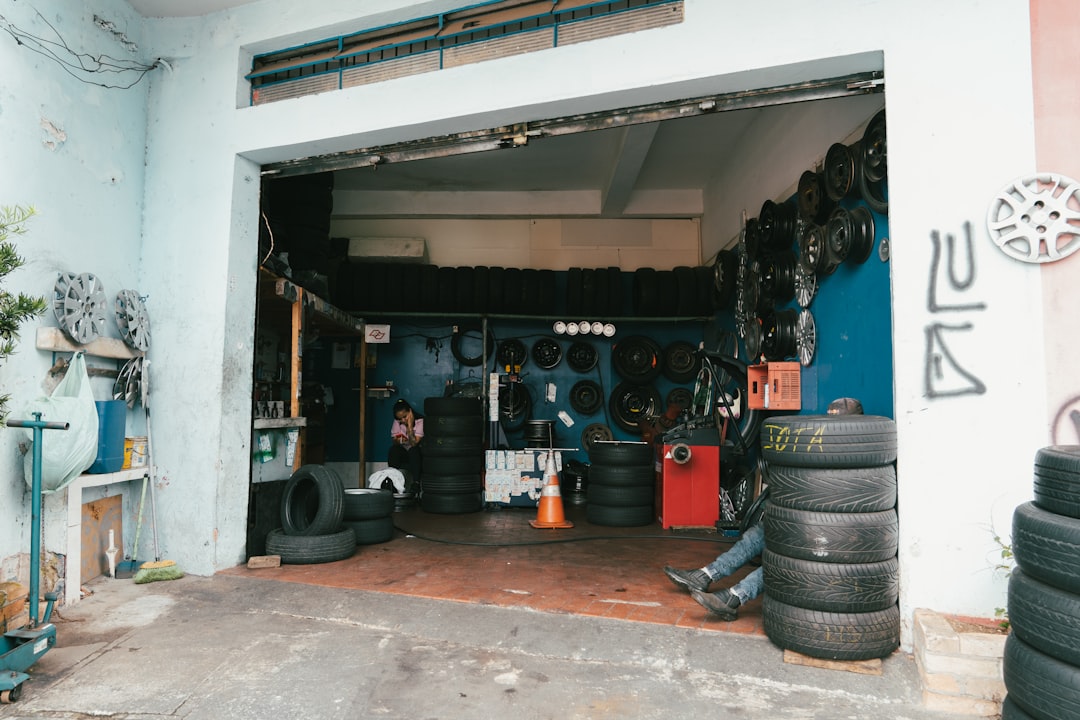How Often to Rotate Tires in Chicago: Salt, Potholes, and Stop-and-Go Reality

Proper tire rotation extends tire life in Chicago conditions
If you're driving in Chicago, your tires face challenges that most drivers never encounter. Between the pothole-ridden streets, corrosive road salt, and constant stop-and-go traffic, Chicago's driving conditions demand a more aggressive tire maintenance schedule than the manufacturer's standard recommendations.
At SSS Auto Repair on Sheffield Avenue, we've serviced thousands of vehicles from Lakeview, Lincoln Park, and Wrigleyville, and we've learned that Chicago drivers need to rotate their tires more frequently than the typical 5,000-7,500-mile intervals recommended in owner's manuals.
Why Chicago is Harder on Tires
Chicago's unique driving environment creates several factors that accelerate tire wear and make rotation even more critical:
1. Pothole Damage
Chicago's notorious potholes create uneven wear patterns, especially on front tires that bear more weight and take the initial impact. A single severe pothole hit can cause immediate tire damage or create wear patterns that affect handling and safety.
2. Road Salt Corrosion
The aggressive road salt used during Chicago winters doesn't just corrode your vehicle's undercarriage—it can also affect tire compounds, especially on older tires or those with minor sidewall damage.
3. Stop-and-Go Traffic
Constant acceleration and braking in city traffic puts extra stress on front tires, leading to faster tread wear and heat buildup that can affect tire performance.
4. Temperature Extremes
Chicago's dramatic temperature swings cause tire pressure fluctuations and compound changes that can lead to uneven wear patterns, especially if tire pressure isn't monitored regularly.
Optimal Tire Rotation Schedule for Chicago Drivers
Based on our experience servicing Chicago vehicles, here's our recommended tire rotation schedule:
Standard Driving (Mix of City and Highway):
- Every 3,000-4,000 miles instead of the typical 5,000-7,500 miles
- More frequent rotations help distribute wear from potholes and city driving
- Early detection of alignment issues or suspension problems
Heavy City Driving (Mostly Stop-and-Go):
- Every 2,500-3,500 miles for maximum tire life
- Essential for vehicles that primarily drive in congested areas
- Helps prevent the severe front tire wear common in city driving
Winter Season (December-March):
- Monthly tire pressure checks due to temperature fluctuations
- Rotation every 2,000-3,000 miles during winter months
- More frequent inspections for pothole damage and salt corrosion
Signs You Need More Frequent Rotations
Watch for these indicators that your current rotation schedule isn't frequent enough:
- Uneven tread depth: Front tires wearing faster than rear tires
- Vibration at highway speeds: Often indicates uneven wear patterns
- Pulling to one side: Can be caused by uneven tire wear or alignment issues
- Noisy driving: Irregular wear patterns can create road noise
- Reduced traction: Especially noticeable in wet conditions
Chicago-Specific Tire Rotation Patterns
While most vehicles use standard rotation patterns, Chicago's driving conditions may require adjustments:
Front-Wheel Drive Vehicles:
Move front tires straight back, cross rear tires to front (most common pattern). This helps distribute the heavy front wear from city driving and pothole impacts.
All-Wheel Drive Vehicles:
Cross-rotation pattern moves each tire to a different position. This is especially important in Chicago because AWD vehicles often have more complex wear patterns due to varying power distribution.
Rear-Wheel Drive Vehicles:
Move rear tires straight forward, cross front tires to rear. This pattern helps even out the wear from Chicago's stop-and-go traffic patterns.
What to Expect During a Professional Tire Rotation
At SSS Auto Repair, our tire rotation service includes:
- Visual inspection: Check for pothole damage, sidewall issues, and irregular wear patterns
- Tread depth measurement: Ensure even wear across all tires
- Pressure adjustment: Set optimal pressure for current conditions
- Lug nut torque: Proper tightening to manufacturer specifications
- Alignment check: Identify if alignment issues are causing uneven wear
- Balance check: Ensure smooth driving and prevent vibration
Cost-Benefit Analysis: More Frequent Rotations
While more frequent rotations cost more upfront, they provide significant long-term benefits:
Extended Tire Life:
Proper rotation can extend tire life by 15-25%, potentially saving $200-$400 per set of tires.
Improved Safety:
Even wear patterns provide better traction, especially important in Chicago's variable weather conditions.
Early Problem Detection:
More frequent inspections catch alignment issues, suspension problems, or pothole damage before they become expensive repairs.
Better Fuel Economy:
Properly maintained tires with even wear patterns can improve fuel efficiency by 2-3%.
DIY vs. Professional Rotation
While tire rotation seems simple, Chicago's challenging conditions make professional service more valuable:
Professional Advantages:
- Proper torque specifications for safety
- Professional inspection for hidden damage
- Alignment and balance checks
- Expert knowledge of Chicago-specific wear patterns
- Proper disposal of old tires (if replacement needed)
When DIY Makes Sense:
- You have proper tools and knowledge
- Tires are in excellent condition
- You can safely lift and support your vehicle
- You understand proper torque specifications
Seasonal Considerations for Chicago Drivers
Spring (March-May):
Post-winter inspection is crucial. Check for pothole damage, salt corrosion, and alignment issues caused by winter driving conditions.
Summer (June-August):
Heat can accelerate wear patterns. Monitor tire pressure more frequently and consider earlier rotations if you notice uneven wear.
Fall (September-November):
Prepare for winter by ensuring even wear patterns and optimal traction before snow and ice arrive.
Winter (December-February):
Most critical time for frequent rotations due to temperature fluctuations and pothole season beginning.
Keep Your Tires Performing Optimally in Chicago - Schedule Your Rotation Today
Don't let Chicago's challenging driving conditions shorten your tire life unnecessarily. Our experienced technicians understand the unique wear patterns caused by city driving, potholes, and seasonal changes. We'll ensure your tires wear evenly and last as long as possible.
Schedule Tire Rotation ServiceCall us at (773) 472-4444 or visit our shop at 2815 N Sheffield Ave, Chicago, IL 60657-5003
